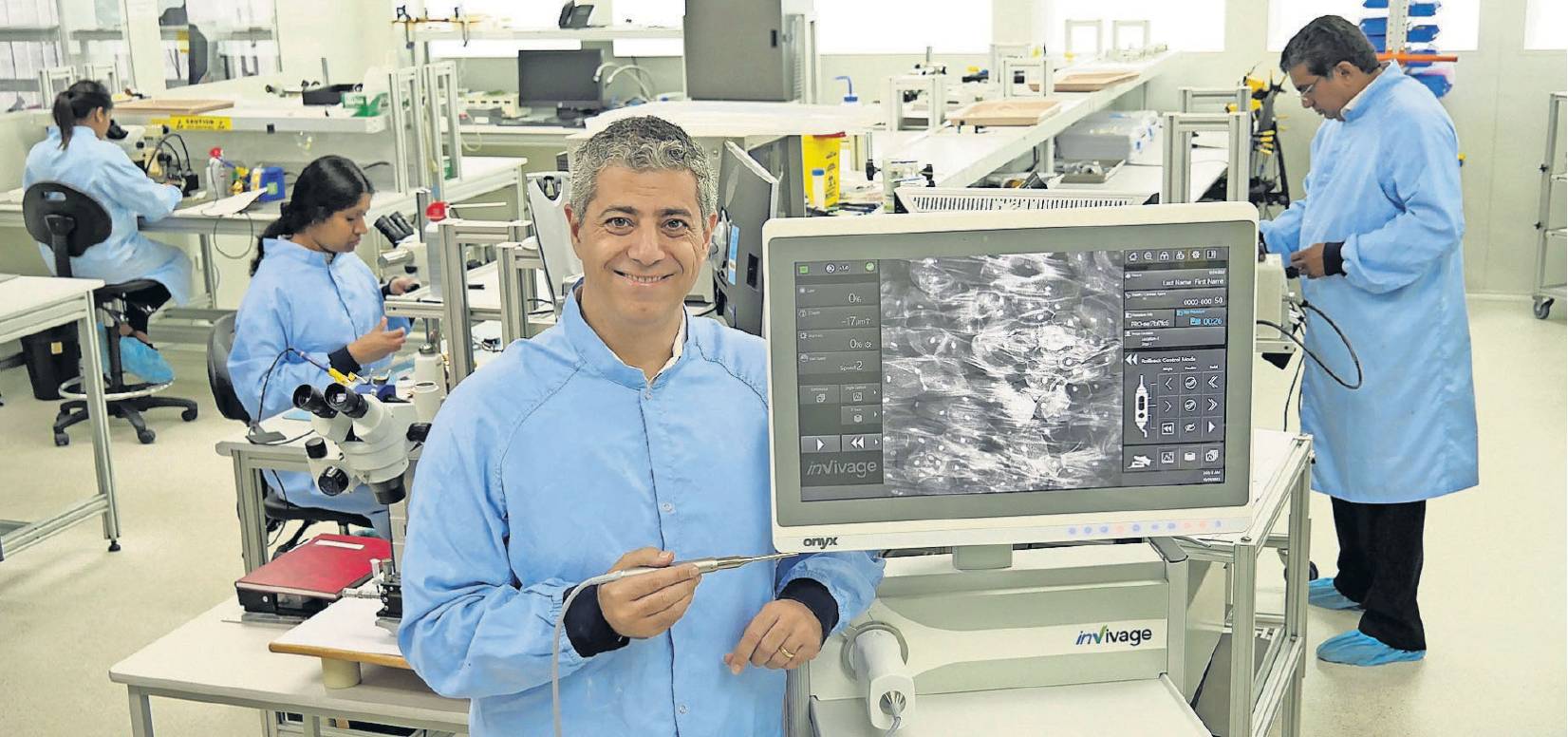Real-time pathology for surgeons
When it comes to medical diagnostic procedures such as age-old X-rays, time seems to have stood still despite the astounding technological advancements over the last two decades.
In the case of cancer surgery, the practice of sending a frozen tissue sample to the lab remains the same since Dr William Mayo – founder of Minnesota’s esteemed Mayo Clinic – requested one from pathologist Dr Louis Wilson in 1905.
More broadly, physical biopsies remain the standard of care for determining whether a mass is cancerous, or for identifying other diseases.
A biopsy involves removing a small piece of tissue, with the sample analysed under a microscope. They can be painful and result in side effects such as bleeding, infection and even accidental damage to adjacent organs.
They also take precious time and often turn out to be unnecessary.
Many surgeons also question the ‘‘frozen section’’ technique, which involves the sample being sent to a lab for analysis mid-surgery. Despite the profession’s inherently conservative nature, much better techniques are slowly taking hold.
One of them is a procedure called ‘‘digital biopsy’’ with confocal laser endomicroscopy (CLE), by which clinicians obtain a live or ‘‘in-vivo’’ microscopic image of tissue with a hand-held device.
Surgeons and pathologists can make real-time decisions during surgery, in a fraction of the time it takes to get a verdict on a biopsy from the lab. The surgeon knows immediately whether further excision is required or – just as importantly – if the suspect mass is benign.
A leading player in CLE device development, the ASX-listed Optiscan Imaging is developing slide-free, biopsy-free, 3D digital imaging tools to create a new standard of care in digital pathology and precision surgery.
Optiscan’s patented tech uses miniaturised componentry to create a pen-sized digital microscope and produce high-resolution images and guide cancer surgery in real time.
Founded three decades ago as part of the listed Circadian group (now Opthea), Optiscan has long had approved devices for gastrointestinal imaging and neurosurgical applications. The latter is subject to an ongoing alliance with Zeiss, by which the German medical device leader uses Optiscan’s technology in its CONVIVO-branded product.
In a definitive strategy shift, Optiscan in 2021 appointed prominent Perth-based oral physician and pathologist Dr Camile Farah to move the company from this original equipment manufacturer (OEM) model to developing its own products. “Our focus is on evolving to a pure-play medical device manufacturer and shifting exclusively from hardware to software and digital tools,” Farah says.
Optiscan is currently awaiting marketing approval from the US Food and Drug Administration (FDA) for InVivage, a hand-held device for digital biopsies. While this entreaty pertains to oral cancer screening, the company is also eyeing FDA approval for breast cancer diagnoses in both surgical and pathology settings.
It’s hoped the application will be supported by the results of a current 42-patient trial at the Royal Melbourne Hospital, which assesses the efficacy of InVivage compared with traditional histology (microscope examination of cells).
“With breast cancer, one-third of patients who have lumpectomies still have cancerous cells in the surgical bed and have to return for second-stage surgeries and a wider resection,” Farah says. “There is no technology other than ours that shows individual cancer cells live. Surgeons can change the way they do surgery, deliver superior results and get better patient outcomes by clearing the tumour at first resection.”
Optiscan’s ‘‘platform’’ approach means its tech has broad live microscopic imaging applications, including in pathology, life science research and vet clinics. “Oncology makes sense for us as a starting point, because it’s a huge addressable market with numerous clinical issues to solve,” Farah says.
Optiscan’s second-quarter results showed orders of $525,000 from Zeiss, with $289,000 of cash received from customers overall. The company also derives revenue from another miniaturised handheld probe called ViewnVivo, which is used for research purposes by universities and big pharma.
Optiscan’s net cash outflows reduced to $300,000 from $1.1 million previously, and the company retains cash of more than $3 million.
Despite Optiscan’s move away from the OEM model, Farah says the company remains committed to the Zeiss tie up, which pertains exclusively to neurosurgery. As the only provider of its ilk in the research space, the company also remains wedded to ViewnVivo.
In a glimpse of the future, Optiscan in January inked an exclusive collaboration with Canada’s Prolucid Technologies, a leader in artificial intelligence. Over 18 to 24 months, the parties will develop AI algorithms to enable immediate clinical decision-making, focusing on oral cancer in the first instance.
“Prolucid has a great track record of developing software to market with regulatory approvals,” Farah says, adding that Optiscan will fund the development and retain the intellectual property.
The partnership will also help Optiscan’s intended entry into telepathology, which will allow real-time collaboration between surgeons and pathologists.
With cash in the bank and a supportive shareholder base, Optiscan is well placed to achieve its short-term goals including funding multiple clinical trials.
“We are excited about the future and making a difference to healthcare,” Farah says.
